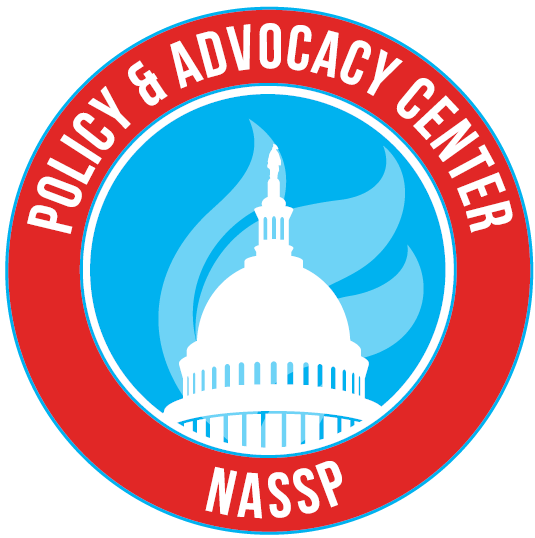To highlight the impact of teacher quality on student achievement and offer policy recommendations to improve teacher recruitment and retention, preparation, evaluation, and professional development.
Research is conclusive that teachers are the most important school-related factor in student learning—with school leaders following as a close second. Nonetheless, teacher quality varies across the country, and the Center for American Progress finds that students of color and low-income students are less likely to be taught by a highly effective teacher.

Each state determines its own requirements for teacher licensure and certification, and 24 states set a high academic bar for admission into teacher preparation programs through grade point average and/or test requirements. Thirty-four states require a 10-week minimum of classroom experience for student teachers, and 13 states require that the mentor teacher has demonstrated effectiveness in the classroom. In addition, 32 states require mentoring for all new teachers. But as states and districts struggle to find excellent teachers for every classroom, the minimum expectations are being reduced.
Alternative routes to teacher certification first emerged in the 1980s as a way for individuals who already have a bachelor’s degree or prior work experience to earn a teaching credential. All states except for Ohio, North Dakota, and Wyoming reported having state-approved alternative routes in 2014, and approximately 20 percent of new teachers are entering the profession through alternative certification programs. While alternative programs tend to recruit more diverse candidates into the teaching profession, they do not have the same requirements for supervised clinical experience as traditional teacher preparation programs.
While districts have always used substitute teachers if a classroom teacher is ill or participating in professional development activities, they are relying on them more to fill long-term gaps. According to the Substitute Teaching Institute at Utah State University, one full year of a student’s K–12 education is taught by substitute teachers. The qualifications for substitute teachers differ in each state, but in general they must have at least a bachelor’s degree or 60 semester hours from an accredited institution of higher education. And while many states do require a teacher’s license and background checks, more than 20 states allow individuals to substitute teach who only have a high school degree or GED. An additional concern for school leaders is that in more than 70 percent of districts across the country, substitute teachers receive no orientation or training.
Guiding Principles
- Building Ranks provides a framework for effective school leaders to improve the performance of each student by building culture and leading learning.
- The 2015 Professional Standards for Educational Leaders state that effective leaders develop the professional capacity and practice of school personnel to promote each student’s academic success and well-being.
- As a leading member of the Coalition for Teaching Quality, NASSP supports its mission to ensure a diverse, talented, and sustainable teaching force that can prepare all students for a variety of postsecondary options and to be contributing citizens in their communities.
- NASSP has previously adopted position statements on the teacher shortage, teacher leadership, and teacher supervision and evaluation that offer recommendations for state and district policymakers on strengthening teacher quality.
Recommendations
Recommendations for Federal Policymakers
- Fully fund Title II, Part A of the Every Student Succeeds Act, which provides resources for states and districts to strengthen teacher and principal preparation programs; reform educator certification and licensure requirements; develop career advancement initiatives for teachers; and offer professional learning opportunities for teachers and principals.
- Reauthorize the Higher Education Act (HEA) and ensure that teacher preparation programs include a strong residency program or substantial student teaching experience, ongoing mentoring, and support for new educators.
- Fully fund the Teacher Quality Partnership grant program under Title II of HEA to strengthen and reform educator preparation programs.
- In collaboration with all education stakeholders, develop a teacher evaluation and support system that includes the following components:
- Feedback and reflective practice
- Multiple measures of classroom practice, student learning, and other evidence related to the teacher’s contribution to schoolwide improvement
- High-quality training, credentialing, and ongoing professional development for principals to fully understand the teacher evaluation rubric and to coach and mentor teachers to improve their practice
- Provide funding for states and districts to train substitute teachers in classroom management, effective teaching strategies, teacher professionalism, and educational laws and issues.
Recommendations for State Policymakers
- Revise teacher certification and licensure requirements so that teacher preparation programs only accept and graduate individuals who demonstrate the capacity to be high-caliber teachers through a teacher performance assessment.
- Require all new teachers to be “profession-ready” when they become the teacher of record in a school. At a minimum, they should:
- Hold a bachelor’s degree and demonstrate in-depth content knowledge in their area of licensure
- Fulfill the requirements of a state-approved preparation program, which includes clinical experiences that use models of accomplished practice by instructors with K–12 experience, as well as promote cultural responsiveness and the ability of teachers to address the individual learning needs and backgrounds of all students
- Complete a comprehensive residency program in which a teacher preparation program and a local school district partner to engage teacher residents in a series of school-based experiences and teaching enrichment opportunities under the guidance of accomplished educators
- Demonstrate proficiency through a valid and reliable classroom-based performance assessment
- Incentivize teacher preparation programs to partner with districts and schools to develop a pipeline of profession-ready teachers; provide aspiring teachers with induction or residency opportunities; and include coursework that will prepare candidates to teach students with disabilities and English-language learners and incorporate literacy instruction into their content areas.
- Ensure that alternative routes to teacher certification are equal in rigor and quality to traditional preparation programs, including significant coursework in effective teaching pedagogy and the multiple subjects a teacher will be licensed to teach.
- Set a high bar for entry into the profession by requiring rigorous qualifications for career and technical education (CTE) teachers, but also offer some flexibility in providing alternate routes into the teaching profession.
- Ensure that CTE teacher candidates have additional training and support in instructional practices, classroom management, and the use of data and assessments to ensure they are effective in the classroom.
- Create tiered licensure and certification systems that recognize participation in ongoing, high-quality professional learning opportunities; attainment of national board certification; and taking on teacher leadership roles within the school or district.
- In collaboration with all stakeholders, develop professional learning and growth systems for teachers that include:
- Feedback and reflective practice
- Multiple measures of classroom practice, student learning, and other evidence related to the teacher’s contribution to schoolwide improvement
- High-quality training for mentors, teacher coaches, and evaluators
- Adopt standards to ensure that professional development for teachers and principals:
- Is content focused
- Incorporates active learning utilizing adult learning theory
- Supports collaboration, typically in job-embedded contexts
- Uses models and modeling of effective practices
- Provides coaching and expert support
- Offers opportunities for feedback and redirection
- Is of sustained duration
- Offer incentives for high school graduates to return as teachers after receiving the appropriate credentials and preparation.
Recommendations for District Policymakers
- Develop partnerships with teacher preparation programs and offer streamlined induction opportunities for student teachers to work in your schools.
- Compensate teachers for relevant prior work experience to help encourage career switchers from science, math, and CTE fields to enter the teaching profession.
- Provide consistent funding for schools to hire assistant principals and other school administrators who directly evaluate and support teachers in the classroom.
- Ensure flexible scheduling and additional compensation for teacher leaders to serve as mentors who work side by side with new teachers.
- Offer annual professional learning opportunities for school leaders on best practices for coaching and mentoring to help teachers improve their instruction.
- Require orientation training for substitute teachers, including coaching and instruction on teaching and classroom management skills.
Recommendations for School Leaders
- Recruit, hire, support, develop, and retain effective and caring teachers.
- Plan and manage staff turnover and succession, providing opportunities for effective induction and mentoring new personnel.
- Develop teachers’ professional knowledge, skills, and practice through differentiated opportunities for learning and growth.
- Deliver actionable feedback about instruction and other professional practice through valid, research-anchored systems of supervision and evaluation to support the development of teachers’ and staff members’ knowledge, skills, and practice.
- Provide teachers with the opportunities and compensation to serve as mentors, instructional coaches, or master teachers, and allow them to take on increased responsibility for professional learning, curriculum, or school improvement activities.
- Foster opportunities for collaboration to improve student achievement such as teacher teams and regularly scheduled common planning time through flexibility within the teacher employment contract.
- Provide stipends for teachers to offer clubs and other opportunities for students who are aspiring teachers to learn about the field of education and work with students.
References
Center for American Progress (2014). Looking at the best teachers and who they teach. Retrieved from https://cdn.americanprogress.org/wp-content/uploads/2014/04/TeacherDistributionBrief1.pdf.
Coalition for Teaching Quality (2014). Excellent educators for every child: a policy roadmap for transforming the teaching and principal profession. Retrieved from http://coalitionforteachingquality.org/images/upload/Wheel_Doc.pdf.
Darling-Hammond, L., Hyler, M.E., Gardner, M. (2017). Effective teacher professional development. Palo Alto, CA: Learning Policy Institute.
Leithwood, K., Louis, K., Anderson, S., Wahlstrom, K. (2004). How leadership influences student learning. Retrieved from www.wallacefoundation.org/knowledge-center/Documents/How-Leadership-Influences-Student-Learning.pdf.
National Association of Elementary School Principals and National Association of Secondary School Principals (2014). Supporting principals in implementing teacher evaluation systems. Retrieved from www.naesp.org/sites/default/files/TeacherEvalBrief_Final.pdf.
National Council on Teacher Quality (2017). State teacher policy yearbook. Retrieved from www.nctq.org/dmsView/NCTQ_2017-Yearbook_Executive_Summary.
National Education Association. Research spotlight on alternative routes to teacher certification. Retrieved from www.nea.org/tools/16578.htm.
National Conference of State Legislatures (2013). Preparing and licensing effective teachers. Retrieved from www.ncsl.org/research/education/preparing-and-licensing-effective-teachers.aspx.
National Policy Board for Educational Administration (2015). Professional standards for educational leaders 2015. Reston, VA.
Russo, A. No substitute for quality. Retrieved from www.aasa.org/SchoolAdministratorArticle.aspx?id=11230.
Substitute Teaching Institute at Utah State University. (2018). About us. Retrieved from https://stedi.org/about/.
U.S. Department of Education, Office of Postsecondary Education (2016). Preparing and credentialing the nation’s teachers: the secretary’s 10th report on teacher quality. Washington, D.C.

